Does High Compliance With Mask Mandates Translate To Covid-19 Downturns
Please share. A very critical phase of childrens' neurodevelopment for their faculties on normal social functions is being either impeded or damaged by a failed mask mandate.
Is pinellas county ready to handle a burden of children who have had such faculties disrupted, iin which such disruptions have been linked to psychopathology, as both a precursor and epiphenomenon of disorders ?
Is Pinellas County Public Health ready to face the potential for the high costs of inevitable mental diagnoses ?
Does High Compliance with mask mandates in Pinellas County translate to Covid case downturns?
Do #maskssavelives ?
Or is it that #MasksDontWork ?
If not, then #MasksOffAmerica !
Household transmission of Sars-CoV-2: a systematic review and meta-analysis of secondary attack rate,
“Age was the most examined covariate, with most studies reporting significantly lower secondary transmission of Sars-CoV-2 to children contacts than adult contacts.”
�https://www.medrxiv.org/content/10.1101/2020.07.29.20164590v1.full.pdf
Children's mortality from COVID-19 compared with all-deaths and other relevant causes of death: epidemiological information for decision-making by parents, teachers, clinicians and policymakers, “COVID rarely kills children, even compared with influenza, against which many children are already vaccinated. Our data show that for mortality COVID-19 is similar to flu, or less severe, in children whilst being the opposite in adults.
”�https://www.sciencedirect.com/science/article/pii/S0033350620302092
Sweden's health agency says open schools did not spur pandemic spread among children
�https://www.reuters.com/article/us-health-coronavirus-sweden-schools-idUSKCN24G2IS
School openings across globe suggest ways to keep coronavirus at bay, despite outbreak�
https://www.sciencemag.org/news/2020/07/school-openings-across-globe-suggest-ways-keep-coronavirus-bay-despite-outbreaks
Associations between Facial Emotion Recognition and Mental Health in Early Adolescence�
https://www.ncbi.nlm.nih.gov/pmc/articles/PMC6981578/
Annals of Epidemiology, Leveraging Epidemiological Principles to Evaluate Sweden’s COVID-19 Response
https://www.sciencedirect.com/science/article/pii/S1047279720304130#bib27
Individual Differences in Children’s Facial Expression Recognition Ability: The Role of Nature and Nurture
�https://www.ncbi.nlm.nih.gov/pmc/articles/PMC2797312/
“perturbations in this ability have been linked to psychopathology, as both a precursor and epiphenomenon of disorders”
Development of emotional facial recognition in late childhood and adolescence, “Faces convey an abundance of information about the internal state of an individual. Appropriately decoding facial expressions aids in an individual’s ability to understand and appropriately adapt to the social environment and thus is a crucial part of social interactions. Gaining a greater understanding of the normal developmental trajectory of emotional facial recognition may help in the early identification and possible treatment of affective disorders such as autism, depression, and anxiety disorders…"
�“Emotional face processing involves a network of brain areas, including the fusiform gyrus, prefrontal cortices , (PFC), insula, and the amygdala . . "
�“Neurodevelopmental studies suggest that the brain areas important for facial expression processing continue to develop structurally throughout late childhood and adolescence and show corresponding functional differences”�
https://www.academia.edu/2908762/Development_of_emotional_facial_recognition_in_late_childhood_and_adolescence
Advice on mask-wearing did not consider impact on pupils' development and mental health , Irish Examiner
https://www.irishexaminer.com/news/arid-40086536.html
Do Masks Impede Children’s Development? New York Times https://www.nytimes.com/2020/09/14/well/family/Masks-child-development.html
August 2020, in a peer reviewed study of nearly 3,500 close contacts to nearly 400 index patients infected with Sars-CoV-2, published in the Annals of Internal Medicine , it was quantified that asymptomatic transmission had a secondary attack rate ranging from 0.3% (.003) to 1% . This means that the spread of the infection from those asymptomatic to their close contacts was only at a rate of 0.3% (.003) to 1%.
20 November 2020 , a study published by Nature Communications found that 1,174 close contacts to 300 asymptomatic cases did not test positive out of a sample size nearly 10,000 participants in the Wuhan Community.
Contact Settings and Risk for Transmission in 3410 Close Contacts of Patients With COVID-19 in Guangzhou, China �
https://www.acpjournals.org/doi/10.7326/M20-2671
“Individuals without symptoms are less likely to transmit the virus than those who develop symptoms.(10, 81, 84, 85) Four individual studies from Brunei, Guangzhou China, Taiwan China and the Republic of Korea found that between 0% and 2.2% of people with asymptomatic infection infected anyone else, compared to 0.8%-15.4% of people with symptoms.(10, 72, 86, 87)”
“Our results showed that patients with COVID-19 who had more severe symptoms had a higher transmission capacity, whereas transmission capacity from asymptomatic cases was limited. This supports the view of the World Health Organization that asymptomatic cases were not the major drivers of the overall epidemic dynamics “ “The secondary attack rate increased with the severity of index cases, from 0.3% (CI, 0.0 to 1.0%) for asymptomatic”
Post-lockdown Sars-CoV-2 nucleic acid screening in nearly ten million residents of Wuhan, China,�
“All city residents aged six years or older were eligible and 9,899,828 (92.9%) participated. No new symptomatic cases and 300 asymptomatic cases (detection rate 0.303/10,000, 95% CI 0.270–0.339/10,000) were identified. There were no positive tests amongst 1,174 close contacts of asymptomatic cases.”�
https://www.nature.com/articles/s41467-020-19802-w
-
 2:20
2:20
America It's a Mess
3 years agoWhy a mask mandates for people with covid-19 antibodies
1371 -
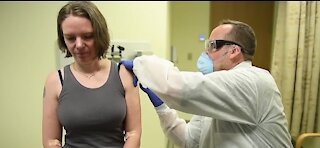 0:55
0:55
KTNV
3 years agoPossible future COVID-19 vaccine mandates
2.48K9 -
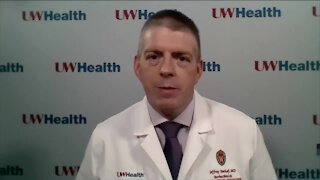 2:41
2:41
WTMJMilwaukee
3 years agoDr. Jeff Pothof gives updates on COVID-19 across the state, mask mandates
8 -
 0:26
0:26
WFTX
3 years agoMiami enforcing mask mandates
3591 -
 2:01
2:01
KSHB
3 years agoHigh demand for COVID-19 tests
18 -
 11:01
11:01
Nick Zangl
3 years ago $0.06 earnedMask Mandates will BACKFIRE.
28615 -
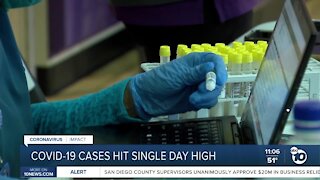 2:33
2:33
KGTV
3 years agoCOVID-19 cases hit single day high
701 -
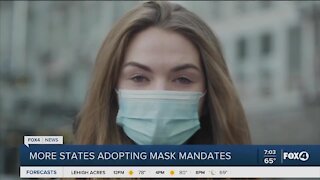 0:31
0:31
WFTX
3 years agoMore mask mandates in the US
1331 -
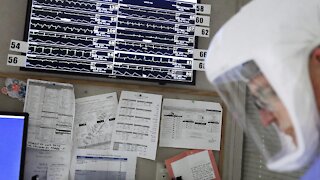 1:25
1:25
Newsy
3 years agoCOVID-19 Hospitalizations Reach Record High
1.38K6 -
 1:25
1:25
Newsy
3 years agoCOVID-19 Hospitalizations Reach Record High
1.64K